Matt Moore's Blog, page 19
February 1, 2012
Why the Chipotle YouTube video works as the new form of advertising in the social media world
During the 2012 TMT Predictions 2012: Looking ahead at the trends presentation I attended in Ottawa two weeks ago, I saw this video:

It was presented as an example of a new form of advertising. Notice how the brand's logo appears only briefly. Rather than saying "We're Chipotle, buy our tacos!" it creates a theme, a feel, an idea that you get caught up in.
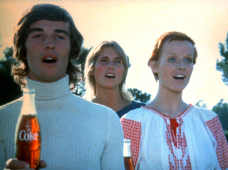
One of the most famous ads of all time, Coca-Cola created a mood with this ad rather than pushing a "buy now" message.
Like Coca-Cola's "Hilltop" TV ad (also known as "I'd Like to Teach the World to Sing"), Chipotle has not only positioned itself differently than its competitors, but used a different way to position itself.
Most restaurants use glossy pictures of steaks, burgers, fries and cold drinks. They appeal to our animal nature to eat. This ad climbs higher on
January 21, 2012
Adam Shaftoe and my article mentioned in Huffington Post (but as Matte Moore)
Chelsea's Vowel's blog post that name checked Adam Shafote and I has been posted to the Huffington Post.
While a huge honour, I am posting this also as a bit of intentional link bait since I am credited as "Matte Moore." Though I have full respect for mattes and all they have done for society, it's not my name. [UPDATE: I got in touch with Chelsea and she very quickly fixed both entries.]
And while not a huge deal, considering the other famous Matt Moores out there, I can use all the attention I can get. I've tried to follow up with Chelsea on this, but can't find an email address for her.
So, if anyone out there read Chelsea's excellent article "Sci-Fi Writer Knows More About Aboriginals Than Most Canadians" and searched for "Matte Moore" and found this post: HELLO!
If you have not read her article, go read it. While it mentions the editorial Adam and I wrote in On Spec, we play a minor role. Really, it's about Robert J. Sawyer, his The Neanderthal Parallax trilogy and issues it explored with Native Canadians. It's well worth a read—basically, the cultural convention that civilization equals European civilization. How we have to settle in one area and grow our population to be civilization when this is not necessarily the case.
In the meantime, a hat tip to Chelsea and glad the piece Adam and I wrote could get her thinking, inspire her to write her piece, which then got me thinking.








January 13, 2012
Teaching a 1-Day Writing Workshop in Ottawa, Feb. 26
With fellow East Block Irregulars Derek Kunsken and Hayden Trenholm, I'll be teaching a one-day writing workshop on February 26, 2012 on the University of Ottawa campus.
The course is aimed at science fiction, fantasy and horror writers who are early on in their career looking to be more success in their writing. Topics we will cover include:
The writing life: Finding time to write and staying motivated
The writing art: How to improve you writing and avoid mistakes that will get you rejected
The writing biz: What happens when you send off your stories
The workshop will run from 10 to 5. The cost is $40 to support Can*Con: The Conference on Canadian Content in Speculative Arts and Literature, an Ottawa-based SF convention.
Full details are on the East Block Irregulars blog, including how to register.








December 31, 2011
2011 Year in Review
2011 was not my greatest year as a fiction writer.
Out of 44 submissions, I made a single sale: "Ascension" to AE: The Canadian Science Fiction Review. While thrilled, some of the rejections were to markets I really wanted to be a part of, namely Mike Kelly's Chilling Tales II and Blood Bound Books' Night Terrors II.
Perhaps that's because this year was mostly a year of revisions. I didn't turn out as many original stories as I would like, instead going back to older stories and revising them, using skills I have sharpened to fix mistakes I hadn't realized I'd made. In retrospect, this was not the best strategy. Some of these stories are too long to be marketable, and others are still not at a level I am happy with.
But, this will be my 59th blog post of the year, so at least I am blogging. I have also jumped on Google+ and created a Facebook page.
My career, however, gathered a lot of momentum.
In January, I was thrilled to hear Cast Macabre's version of my short story "While Gabriel Slept" (sold in 2010) after a number of other audio markets said they loved it, but didn't know how to make it work. This rendition chilled me… and I wrote the story! (Download the MP3). Later in the year, Cast Macabre also accepted my ghost story "The Weak Son" (first published in Tesseracts Thirteen), but the site seems to be on hiatus and I don't know when things will get rolling again.
In mid-2011, I learned "Touch the Sky, They Say," published on AE, had been nominated for a Aurora Award. While I ultimately lost to my friend Hayden Trenholm, it was a great honour and great experience, especially the support D.F. McCourt from AE gave me. And my friends from ChiZine Publications Erik Mohr, Helen Marshall and Sandra Kasturi won Auroras for their work.
I also made a good friend in Adam Shaftoe, editor of the Page of Reviews site, who interviewed me twice for his podcast and ran reviews of my stories "Full Moon Hill," "Touch the Sky, They Say" and "Ascension." He also name-checked me in reviewing Contagion, using my thoughts on what makes a horror story (which was inspired by Gemma Files) to try to define the film.
Speaking of naming checking, Helen Michaud, non-fiction editor over at AE, called me out in her essay "." Her premise is that characters should be named. Trying to use nameless "he" and "I" and "you" in order to add a certain mystery to the story often falls flat. However, she used "Touch the Sky, They Say" and "Ascension" as exceptions that prove the rule.
In non-fiction news, editorials I wrote ran on AE (about "dark SF") and The Page of Reviews (about whether we still need to vigoursly defend genre distinctions). Another editorial on the decline of science fiction and rise of fantasy, which I co-wrote with Adam, will appear in On Spec.
I attended Ad Astra, the World Horror Convention and SFCOntario, sitting on panels, catching up with friends and making new ones. Since attending Ad Astra 2008 as a nobody, I find myself run off my feet at these conventions, knowing so many people and often leaving with regrets I didn't get a chance to talk to this person or that.
I am looking forward to 2012. I have learned a lot over this past year and hope to apply it in the year to come. My goal is to "bring the awesome" (as I am calling it). Not just writing what comes to mind, but telling chilling horror stories and thought provoking sci-fi.
In closing, my heartfelt thanks to everyone who made me feel welcome, appreciated and a part of the wonderful speculative fiction community. I'm looking forward to spending more time with you in 2012.
The ChiZine Connection: Brett Savory, Sandra Kasturi, Helen Marshall, Laura Marshall, Sam Beiko, Brent Hayward, Bob Boyczuk, David Nickle, Gemma Files, Nick Kaufmann, Claude Lalumière, Derryl Murphy, Mike Rowe, Doug Smith, Paul Tremblay, Erik Mohr, Barry King, Kevin Nunn, Tristan Joseph, Rio Youers, Ryan McFadden, Corey Beep
Authors & Editors: Mike Kelly, Madeline Ashby, Suzanne Church, Matt Johnson, D.F. McCourt, Helen Michaud, Diane Walton, Adam Shaftoe, Julie Czerneda
The East Block Irregulars: Derek Kunsken, Peter Atwood, Marie Bilodeau, Hayden Trenholm, Liz Westbrook-Trenholm, Geoff Gander, Agnes Cadieux
See you all next year!








December 26, 2011
Forget mobile strategies, it's time for portable strategies
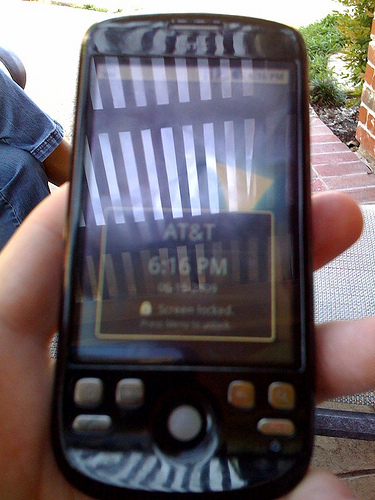
Does your organization have a mobile strategy? What does it include?
And, more importantly, what does it exclude?
Are you including podcasts, ebooks and SMS, or are those older, publish-only technologies not part of a new, cutting-edge, interactive strategy?
To put it another way, by using the word "mobile" are we focusing too much on smartphones at the expense of other devices?
"Mobile" = phones… and just phones
Smartphones are a growing market. (Yes, I just heard your collective "Well, duh.") Responding to what will soon be the new normal, we're crafting mobile strategies—apps for mobile devices and sites optimized for mobile screens. But in a trick of semantics, we've come to think of "mobile" as just smartphones when plenty of other devices are mobile. (See the note below.) Do you include an ebook reader in "mobile"? How about an iPod or plain-old MP3 player? Likely not, but you should. The risk is we're focusing too much on a device, not the concept.

Is this a part of your mobile strategy?
And the concept is that our audience is accessing electronic information on small, portable hand-held devices that might not have WiFi or cell network access.
The case for "portable" strategy
That's why I propose the word "portable." A portable strategy is broader than a mobile strategy. Getting away from a word that's too tied to smartphones, the word "portable" includes the following elements:
What a portable strategy covers
Apps—Programs that run on smartphones and tablets that don't always require an internet connection
Mobile optimized sites—Sites designed to run on smaller screens
Podcasts and vodcasts—Downloadable content one can watch or listen to when they choose, regardless of an internet connection
eBooks—Not just the new epub and mobi formats, but also the good old PDF, which can read by most ebook readers and is more easily understand by most users
SMS—Don't ignore the power of texting, especially that tantalizing beep when a new one arrives that makes people whip out their cell phone
QR Codes—Jumping from the offline to the online world
Understand why people consume portable information
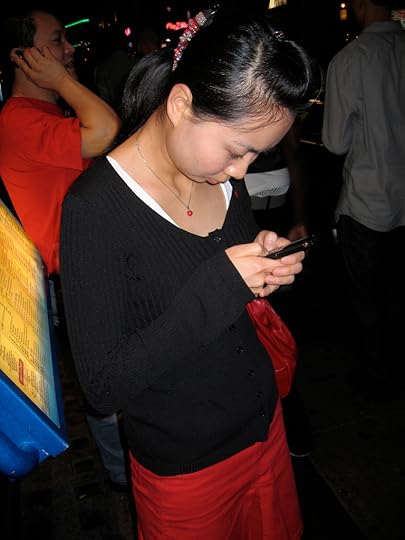
Passing the time? Trying to get help?
People using their portable devices are likely (1) killing time or (2) solving an immediate problem. Most typing and long-term browsing will be done on larger screens (and keyboards). True, there is location-based taggings and check-ins, but those are so tightly tied to portable devices the thinking is self-evident. And ebook readers are also an exception, but like the physical book one might use it in 10-minute bursts on the bus or for several hours on the couch. So:
Provide bite-sized chunks of information—30 minute (maximum) podcasts, brief videos, short ebooks (like articles). Give users something they can use to fill their time with in the moment or saved for later. In the past, people killed time with a paperback book or the radio when riding the bus, driving to work, jogging or sitting in a waiting room. A one-hour video or graphically-intense PDF won't replace that.
Provide lengthy, detailed information where warranted. People tend to listen, watch or read in short bursts, but not always. For that long car ride or flight, a 90-minute video or book-length ebook is worthwhile. But these will be times when someone might not have an Internet connection, so make sure it is downloadable. And make the size and length obvious to someone before they download it.
Not everyone gets the latest gadget. Plenty of people are loyal to their old Samsung MP3 player or Sony eBook Reader. While the latest gadgets make one-click access easy, many people still need to download and transfer files to a device. Make this process as easy as possible and provide explanations of how to do it.
Social media apps make it easy to check Twitter or Facebook when waiting in line or for the bus. These actions are perfect way to fill a spare few minutes. So what quick, light-weight interactions can you offer via a small screen?
Look at your web metrics to see which pages are the most popular with mobile browsers/operating systems and figure out what you can do to make them easier to use with a portable device. While using CSS to optimize an entire site is ideal, it might not be possible after 15 years of designing for larger screens.
Understand a mobile-optimized web application might be better than a downloaded app. While the Web app requires an internet connection, but also keeps a user on your site and can be updated easily without having to push an updated mobile app to the user. As well, you only need to make one Web app versus supporting several mobile platforms.
Don't go overboard
Those who created mobile/portable strategies are likely innovators & early adopters. We connect our Kobos to WiFi, listens to MP3s on ours smartphone and browser the app store. Not everyone does. We still live in a world where desktop computers, Windows and Internet Explorer are king. So start small. Recognize things are moving toward portable devices, but not at the expense of taking resources away from tried-and-true channels where the majority of your communication still happens.
Data-driven decisions
Use Web analytics when making decisions. Virtually everything is trackable, so use data to decide where to focus efforts, see if you are succeeding, and adjust as necessary. While wanting to do something cool and innovative can fuel a project, it must have a solid business rationale, too. Remember: most apps never get downloaded, most videos are never seen, most ebooks never sell. Don't spend valuable time and effort on something you might abandon in three months.
What is ideal for a portable device?
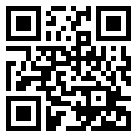 QR codes let you move someone from the real world to the online world. While very cool, give careful thought to this process. What situation would someone be in where online content would be needed? Up-to-date information like the weather or travel delays, like in an airport? But make sure:
QR codes let you move someone from the real world to the online world. While very cool, give careful thought to this process. What situation would someone be in where online content would be needed? Up-to-date information like the weather or travel delays, like in an airport? But make sure:
You have a call to action so one knows what will happen when they scan the code because while those of us in online communications know what they are, most people don't
There is WiFi where you are posting these codes; don't count on a cell network
If the QR code points to a webpage, make sure it is optimized for mobile
Have an offline way to access this information; don't exclude those without smartphones
And use UTM or some other mechanism to track who often QR codes are used to measure success.
The main take-away
Portable devices are growing, but are far from dominant. And it will be quite some time before a portable device like tablets completely replace the laptop or desktop as the main computer in a household. For now, understand how and why people use portable devices—all portable devices.
And don't just focus on the those on the cutting edge. An MP3 player might seem passé, but a 50-something mom who got one for Christmas three years ago is probably still using it. Don't exclude the late majority because you see them as luddites when developing a mobile portable strategy. They probably make up an untapped, under-served market.
NB: Google searches for "mobile phones" and "cell (or cellular) phones" shows more than 4 times the number of hits for "mobile" versus "cell" phones. Google Insights show searches for "mobile" are far greater than for "cellular". (And even though searches for "mobile" are in a slight decline, it is due to the increase in searches for "smartphone"s.)








December 6, 2011
Three anthologies seeking submissions
Three anthologies are open or soon will be for submissions.
Bibliotheca Fantastica
Edited by my friend (and CZP author) Claude Lalumière along with Don Pizarro, this anthology from Dagan Books is looking for
"Stories having to do with lost, rare, weird, or imaginary books, or any aspect of book history or book culture, past, present, future, or uchronic. Any genre. Although the fantastical is not essential per se, stories should evoke a sense of the fantastic, the unknown, the weird, wonder, terror, mystery, pulp, and/or adventure, etc."
Full details on their site, but the basics are:
Time Period = December 15, 2011– March 31, 2012
Payment = 2 cents per word + contributor copies
Length = 10K words max
Response Time = Doesn't say
No reprints
No sim subs
2 subs per author
Tesseracts Sixteen
From Edge Publishing, they recently released the guidelines for the latest volume in their speculative anthology, which will be edited by Mark Leslie. They're looking for stories and poems that "focus on art, music, literature and cultural elements which are integral to the story. " This anthology is only open to Canadians citizens (including ex-pats), landed immigrants (aka permanent residents) and long time residents.
Time period = Now – February 29, 2012
Payment = $20.00 for poems, $50 to $150 for stories (see guidelines for details)
Length = 5K words max
Response Time = ~15 days
Accepts reprints, but a "hard sell"
Accepts sim subs, but not recommended
Only one story per author
Here Be Monsters Anthology
Here Be Monsters is seeking stories for their sixth issue, out in winter 2012. They will accept stories in any genre. This anthology is only open to Canadian residents.
Time period = Now – January 16, 2012
Payment = $30 (flat) + contributor copy
Length = 10K words max
Response Time = Doesn't say
No reprints
Accept sim subs
[Please Note: I am not associated with any of these; just passing along the info. Please direct any questions to the editors/publishers.]








December 3, 2011
Review: The Walking Dead – Season 2
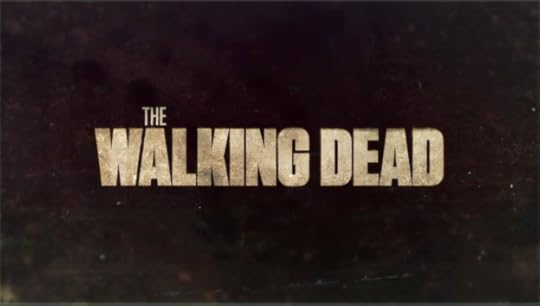 AMC's The Walking Dead wrapped up the first half of its second season, leaving me wanting more. Not just more episodes, but more oomph. When did the air go out of this show?
AMC's The Walking Dead wrapped up the first half of its second season, leaving me wanting more. Not just more episodes, but more oomph. When did the air go out of this show?
[Minor spoilers follow, but nothing major.]
Hershel's farm lacks Atlanta's dangers
When word of budget cut backs broke this summer, I worried how that would affect the story.
The result: endless days on Hershel's farm. The narrative McGuffin—finding Sophia—didn't hold my attention the way zombies-at-the-gate did. The characters never seemed in danger and Sophia was never developed enough for me to care.
By the second or third episode, it was apparent the search for her was just a way to put characters in conflict. While the conflicts—Shane vs. Rick, Rick vs. Hershel, Andrea vs. everybody—have been top-notch in both writing and acting, it lacked the oh-my-god tension of Atlanta.
Walking Dead – Zombies = Little House on the Post-Apocalytic Prairie
Don't get me wrong—a good show should have different arcs and feels for each season. But there's been too much character conflict with only a token zombie scene each episode. (The exception, of course, is the beginning of the first episode. It's one of the most tense scenes on television since the Galactica jumped into New Caprica's atmosphere to launch vipers. (Better, in fact, because there were no zombies on New Caprica.)) This happened to Lost when they left the island and when Sylar went soft on Heroes.

Zombies don't come cheap
Lower budget means fewer zombies
Not that we need wall-to-wall zombies. This is drama, not action. But zombies' unique threat is what drives the show.
So where are they? Budget cuts.
Each day of shooting zombies means more extras, more make-up, more make-up artists. Which leads to Hershel's farm—a less costly practical set, a fixed number of cast members and none of the grandeur of the first season.
But there certainly some things to love about this season
 Norman Reedus' Daryl is a complex, brilliant character. One of two characters not from the comic (the often-absent T-Dog (IroneE Singleton) being the other), Daryl strikes me as someone like Lost's Sawyer—a man who never had a chance to be a hero. Now that he is, he's finally found himself while fighting inner demons.
Norman Reedus' Daryl is a complex, brilliant character. One of two characters not from the comic (the often-absent T-Dog (IroneE Singleton) being the other), Daryl strikes me as someone like Lost's Sawyer—a man who never had a chance to be a hero. Now that he is, he's finally found himself while fighting inner demons.
And we are departing even more from the comics.
The comic's Andrea is well-adjusted; the show's is bad-ass.
Carol is completely different.
And it's no secret the Shane vs. Rick conflict is something different on the show.
Cliffhanger? Not really…
My biggest disappointment was how this half-season ended. We needed one more scene to wrap it up as a complete story. Hershel telling Rick to leave. Or Hershel eating a bullet. Or opening fire.
The resolution of this episode was too easy, like the writers thought forcing characters to choose sides was more thrilling than life-or-death danger. OK, a minor spoiler: there are zombies on the farm, but they never stand a chance against our (well-armed, remember) heroes.
So what's next?
AMC has given The Walking Dead a third season, but without Frank Darabont what's the point? Like ABC's failed FlashForward, the creative team running The Walking Dead need to make up their mind what this show is. Horror? Drama? Life-or-death or existential struggle?
I will be back for the second half of the season, but fair warning to AMC: as a horror fan in the plum demographic of viewers you want, my interest is waning. Get Darabont back and give him the budget he deserves.








November 25, 2011
Why you should use "old style" retweets
When Twitter first introduced their retweet button (which they call "Web retweets") in late 2009 / early 2010, I was excited. Here was a chance to pass tweets to my followers without sacrificing almost 20 characters to include the "RT @[username]" prefix.
I was new to Twitter at the time. As I followed more and more users, I sorted them into Lists, then started using HootSuite to track and manage the flow of tweets. Somewhere along the way, I came to realize I wasn't seeing web retweets. Sometimes I'd even see "Sorry about that last retweet, the link doesn't work" even though there had been nothing from that user.
Web retweets are not seen in Lists
Turns out, web retweets do not show up in your Lists. According to a post in HootSuite help (posted verbatim):
Twitter does not display Twitter Web Retweets in Lists…
A twitter list is limiting in nature it gives you a subset of your whole twitter feed. I like the fact that web retweets aren't in there – they are literally somebody else's tweet that i did NOT put in the list.
While I understand the rationale, given the widespread use of HootSuite and TweetDeck, how many retweets are we missing.
A reason to use old style retweets
This information made me realize how many tweets that I had intended to pass along to my followers—because they were interesting, useful or amusing—were never seen. While I understand the rationale that seeing someone you do not follow in your stream can be jarring, consider that someone you follow wants you to see that tweet.
So if you want your followers—more and more of whom are no doubt usings Lists—return to the days of the old school retweet. This will mean that some tweets may need to be shorter, but what the hell. If you can't shorten a tweet to make it fit, you can always use the retweet button on Twitter.com.
To do this in HootSuite:
Go to Settings > Preferences
Uncheck "Use Twitter Web retweets."
How to see others' retweets in HootSuite
While web retweets will not show up in your lists, there is a way to see the retweets of those you follow in HootSuite:
Click the + button to add a Stream
Select Twitter from the menu on the left
Select your profile from the top dropdown
Select "Retweets to me" from the bottom dropdown menu
And just like that, we can start using retweets a bit more efficiently.








November 21, 2011
New Facebook page: www.facebook.com/MattMooreWrites
I received 25 fans for my new Facebook page, which means I can get a custom URL. No surprise, but you can now find my Facebook page at www.facebook.com/MattMooreWrites.








November 14, 2011
Please help me celebrate this Friday (Nov. 18) in Toronto
AE: The Canadian Science Fiction Review has released the details of their party taking place this Friday, November 18 at SFContario in Toronto. What makes this special is the party is open to everyone—you can come even if you are not going to the convention.
This party is meant to celebrate AE's first year online and their accomplishments during that time, including my Aurora Award nomination for "Touch the Sky, They Say." So, that kind of means I will be a guest of honour. If you are in Toronto and free that evening, please come by to help me and the rest of the AE family celebrate.
Doors will open at 9PM. Admission is free and there will be music, free cake, and a cash bar.
Address is:
Ramada Plaza Hotel
300 Jarvis Street (just south of Carlton) [Google Maps]
Toronto, ON
Full details are available on the SFContario site.
[image error]











